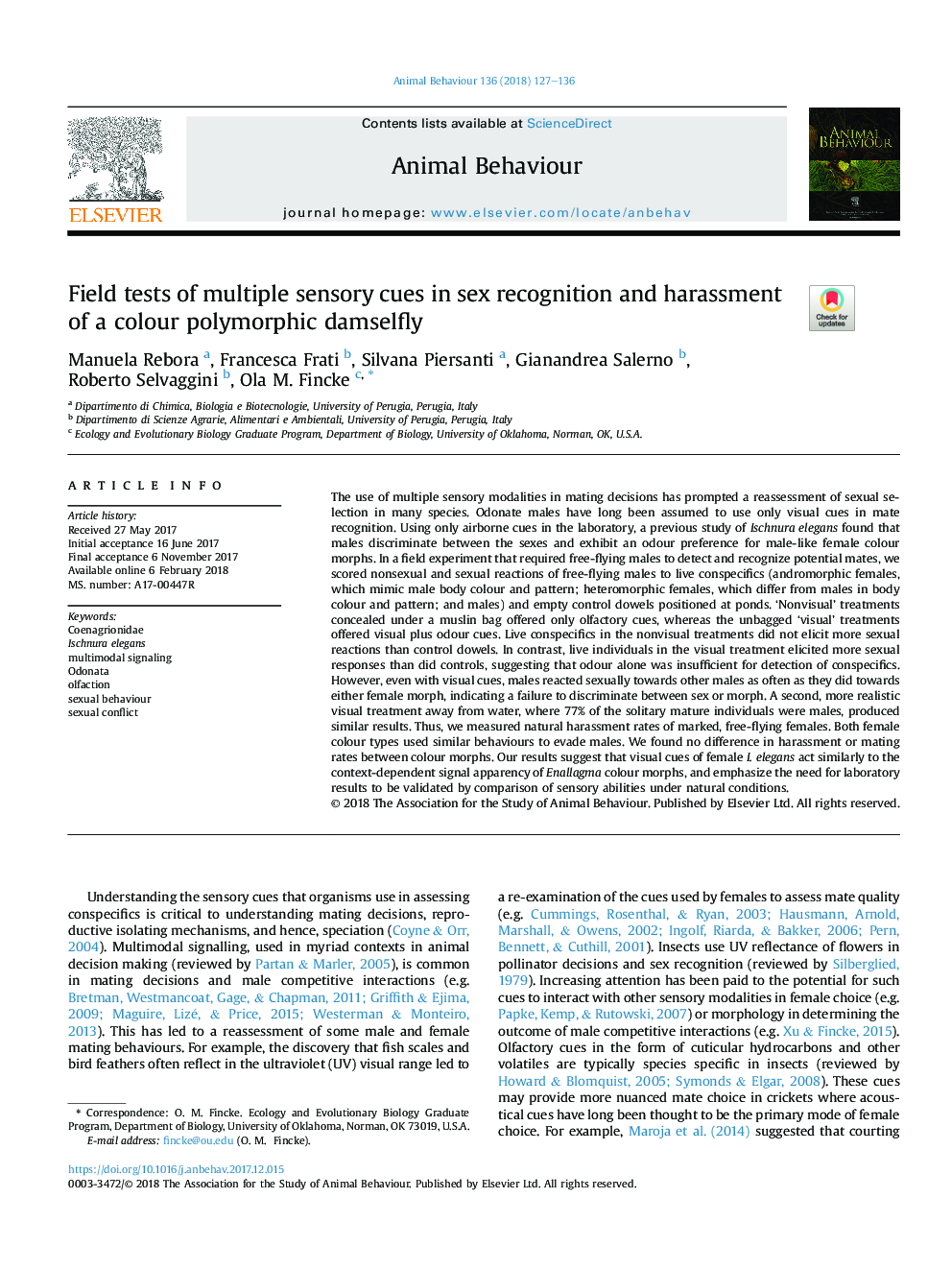| کد مقاله | کد نشریه | سال انتشار | مقاله انگلیسی | نسخه تمام متن |
|---|---|---|---|---|
| 8488684 | 1552192 | 2018 | 10 صفحه PDF | دانلود رایگان |
عنوان انگلیسی مقاله ISI
Field tests of multiple sensory cues in sex recognition and harassment of a colour polymorphic damselfly
ترجمه فارسی عنوان
آزمایشهای میدانی از نشانه های حسی چندگانه در تشخیص جنسیت و آزار و اذیت یک زنبورد چند رنگی
دانلود مقاله + سفارش ترجمه
دانلود مقاله ISI انگلیسی
رایگان برای ایرانیان
کلمات کلیدی
موضوعات مرتبط
علوم زیستی و بیوفناوری
علوم کشاورزی و بیولوژیک
علوم دامی و جانورشناسی
چکیده انگلیسی
The use of multiple sensory modalities in mating decisions has prompted a reassessment of sexual selection in many species. Odonate males have long been assumed to use only visual cues in mate recognition. Using only airborne cues in the laboratory, a previous study of Ischnura elegans found that males discriminate between the sexes and exhibit an odour preference for male-like female colour morphs. In a field experiment that required free-flying males to detect and recognize potential mates, we scored nonsexual and sexual reactions of free-flying males to live conspecifics (andromorphic females, which mimic male body colour and pattern; heteromorphic females, which differ from males in body colour and pattern; and males) and empty control dowels positioned at ponds. 'Nonvisual' treatments concealed under a muslin bag offered only olfactory cues, whereas the unbagged 'visual' treatments offered visual plus odour cues. Live conspecifics in the nonvisual treatments did not elicit more sexual reactions than control dowels. In contrast, live individuals in the visual treatment elicited more sexual responses than did controls, suggesting that odour alone was insufficient for detection of conspecifics. However, even with visual cues, males reacted sexually towards other males as often as they did towards either female morph, indicating a failure to discriminate between sex or morph. A second, more realistic visual treatment away from water, where 77% of the solitary mature individuals were males, produced similar results. Thus, we measured natural harassment rates of marked, free-flying females. Both female colour types used similar behaviours to evade males. We found no difference in harassment or mating rates between colour morphs. Our results suggest that visual cues of female I. elegans act similarly to the context-dependent signal apparency of Enallagma colour morphs, and emphasize the need for laboratory results to be validated by comparison of sensory abilities under natural conditions.
ناشر
Database: Elsevier - ScienceDirect (ساینس دایرکت)
Journal: Animal Behaviour - Volume 136, February 2018, Pages 127-136
Journal: Animal Behaviour - Volume 136, February 2018, Pages 127-136
نویسندگان
Manuela Rebora, Francesca Frati, Silvana Piersanti, Gianandrea Salerno, Roberto Selvaggini, Ola M. Fincke,
